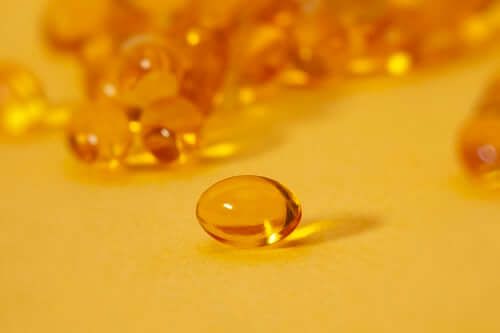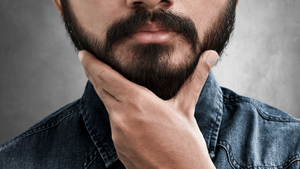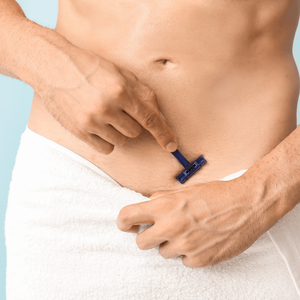What is Finasteride?
Finasteride has been one of the most commonly used drugs in the therapeutic treatment of Male pattern Baldness (androgenetic alopecia, AGA). Finasteride is the only FDA approved oral DHT blocker available in the market. But before we talk about how Finasteride works and its potential side effects, lets understand what we are trying to solve – Androgenetic Alopecia.
What is androgenetic alopecia / male pattern baldness
Male pattern baldness is one of the most common reasons for hair fall. The culprit of this problem is increased sensitivity of hair follicles to dihydrotestosterone (DHT) that results in a gradual reduction in hair dimension and subsequently, causes hair loss. The patterned nature of hair loss in Androgenetic alopecia is because follicles in certain areas of the scalp are more sensitive to DHT than others.
DHT is a strong by-product of the male hormone testosterone that is responsible for the reduction in hair dimensions, the conversion of which to the later is mediated by enzyme 5 alpha-reductase.
How Finasteride works on DHT
Finasteride is widely used for the treatment of androgen-dependent hair disorders such as androgenetic alopecia. [1]It is a selective 5 alpha-reductase inhibitor that is administered orally in a dose of 1 mg once daily for androgenetic alopecia. This inhibitor belongs to a class of drugs that are used in the treatment of male pattern baldness and prostate enlargement. Finasteride aims to minimize hair loss by simply blocking the conversion of testosterone to DHT. Finasteride has also been used topically in combination with minoxidil as a solution or gel with varying results
How effective is finasteride?
A systematic review of 12 studies showed moderate-quality evidence that the daily use of oral finasteride increases hair count. It also improves the patient and investigator assessment of hair appearance(2) An Indian study of 100 patients suggested that finasteride alone, or in combination with minoxidil or ketoconazole, showed statistically significant improvement over minoxidil only recipients(3). Dermatologists use finasteride orally for varying duration and one study found it was being prescribed for anywhere between 6months and 5 years (9)
Side effects of Finasteride
No drug is completely free of side effects. Before consuming any medicine it is imperative to understand it’s possible side effects. Long term usage of Finasteride has been linked to sexual dysfunction. Yet, several studies refute the dreaded allegation and merely claim it as a “nocebo“ phenomenon where the anticipation of a side effect leads to the manifestation of the said effects given the psychological component of sexual dysfunction. These studies reveal that sexual adverse effects occur at the rate of 2.1-3.8% (comparable to placebo).(10)(11)(12)(13)(14)(15)
Erectile dysfunction is the most common side effect followed by ejaculatory dysfunction and loss of libido. These effects occurred early in therapy and returned to normal on stoppage of the drug or while continuing use of the drug over a period of time(8)
Find all the answers to your questions here:
Question:Will I face sexual side effects while on finasteride therapy?
Answer: No, not everyone faces sexual side effects after consumption of Finasteride. Proper guidance and discussion with a physician is necessary if one experiences any sort of side effects.
Question: Is the effect of finasteride permanent on hair growth?
Answer: No. The results achieved by finasteride therapy can get partially or completely reversed once therapy is stopped. Hence, a multimodal approach is necessary for sustained and long term effect.
Question: When will I see results?
Answer: You need to be on finasteride therapy for at least 3-6 months before you see any results.
Question: How long should you continue to take finasteride?
Answer: The duration of treatment depends upon the response to treatment and hence it is variable. A regular follow up with your dermatologist/trichologist is a must.
Questions: Will it affect your kidneys or liver?
Answer: People with chronic liver disease or kidney problems, should completely avoid finasteride.
Final take on Finasteride
So in conclusion, finasteride, if used carefully and judiciously in the right dosage and with other adjuvants, can help in gaining significant improvement of Androgenic Alopecia and thereby their quality of life along with a long term halt in the progress of the disease. A thorough discussion with one’s physician coupled with regular follow up can help alleviate side effects and the fear associated with it and help a patient reap maximum benefits from this compound.
References
-
Stough D, Stenn K, Haber R, Parsley WM, Vogel JE, Whiting DA, et al. Psychological effect, pathophysiology, and management of androgenetic alopecia in men. Mayo Clin Proc 2005;80:1316-22.
-
Mella JM, Perret MC, Manzotti M, Catalano HN, Guyatt G. Efficacy and safety of finasteride therapy for androgenetic alopecia: A systematic review. Arch Dermatol 2010;146:1141-50
-
Khandpur S, Suman M, Reddy BS. Comparative efficacy of various treatment regimens for androgenetic alopecia in men. J Dermatol 2002;29:489-98
-
Irwig MS, Kolukula S. Persistent sexual side effects of finasteride for male pattern hair loss. J Sex Med 2011;8:1747-53. Back to cited text no. 24
-
Collodel G, Scapigliati G, Moretti E. Spermatozoa and chronic treatment with finasteride: A TEM and FISH study. Arch Androl 2007;53:229-33. Back to cited text no. 25
-
Traish AM, Hassani J, Guay AT, Zitzmann M, Hansen ML. Adverse side effects of 5α-reductase inhibitors therapy: Persistent diminished libido and erectile dysfunction and depression in a subset of patients. J Sex Med 2011;8:872-84. Back to cited text no. 26
-
Gur S, Kadowitz PJ, Hellstrom WJ. Effects of 5-alpha reductase inhibitors on erectile function, sexual desire and ejaculation. Expert Opin Drug Saf 2013;12:81-90.
-
Guidelines on the use of finasteride in androgenetic alopecia Venkataram Mysore, BM Shashikumar,Department of Dermatology, Venkat Charmalaya, Institute for Advanced Dermatology and Postgraduate Training, Bengaluru, Karnataka, India2 Department of Dermatology, Mandya Institute of Medical Sciences, Mandya, Karnataka, India THERAPEUTIC GUIDELINES – IADVL Year : 2016 | Volume : 82 | Issue : 2 | Page : 128-134
-
Elisabetta Sorbellini, Daniela Pinto, Barbara Marzani, and Fabio Rinaldi Drug Treatment for Androgenetic Alopecia: First Italian Questionnaire Survey on What Dermatologists Think about Finasteride Dermatol Ther (Heidelb). 2018 Jun; 8(2): 259–267.Published online 2018 Mar 24. doi: 10.1007/s13555-018- 0233-6
-
Carbone DJ Jr, Hodges S. Medical therapy for benign prostatic hyperplasia: Sexual dysfunction and impact on quality of life. Int J Impot Res 2003;15:299-306. Back to cited text no. 17
-
Mondaini N, Gontero P, Giubilei G, Lombardi G, Cai T, Gavazzi A, et al. Finasteride 5 mg and sexual side effects: How many of these are related to a nocebo phenomenon? J Sex Med 2007;4:1708-12. Back to cited text no. 18
-
Kaufman KD, Olsen EA, Whiting D, Savin R, DeVillez R, Bergfeld W. Finasteride in the treatment of men with androgenetic alopecia. J Am Acad Dermatol 1999;41:555-63. Back to cited text no. 19
-
Leyden J, Dunlap F, Miller B, Winters P, Lebwohl M, Hecker D, et al. Finasteride in the treatment of men with frontal male pattern hair loss. J Am Acad Dermatol 1999;40 (6 Pt 1):930-7. Back to cited text no. 20
-
Moinpour CM, Darke AK, Donaldson GW, Thompson IM Jr, Langley C, Ankerst DP, et al. Longitudinal analysis of sexual function reported by men in the prostate Cancer prevention trial. J Natl Cancer Inst 2007;99:1025-35. Back to cited text no. 21
-
Sonthalia S, Sahaya K, Arora R, Singal A, Srivastava A, Wadhawan R, Zartab H, Gupta KS. Nocebo effect in dermatology. Indian J Dermatol Venereol Leprol 2015;81:242-50














